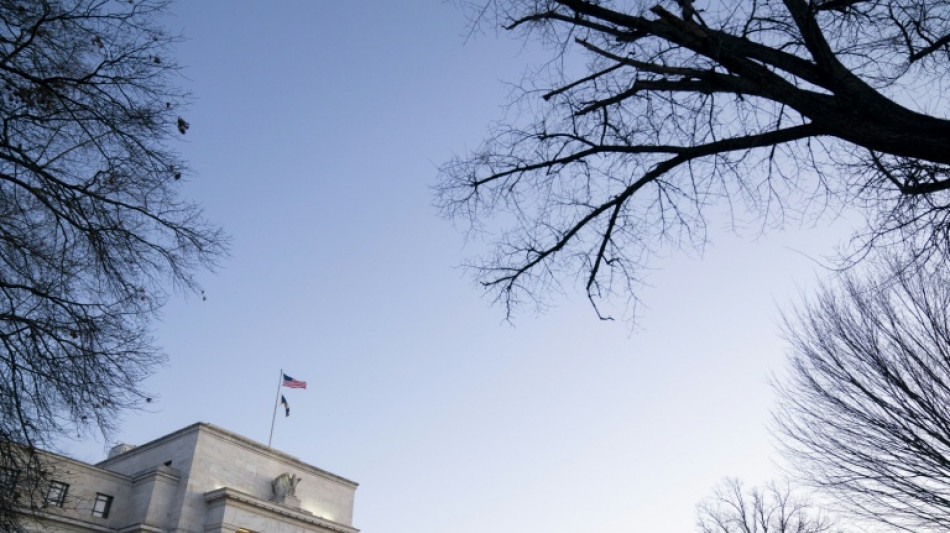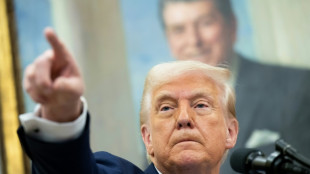

After days of tumult, Wall Street awaits Fed's moves on inflation
The conclusion of the Federal Reserve's first policy meeting of the year on Wednesday can't come soon enough for Wall Street, which has experienced days of chaotic trading as investors fret over what steps the central bank might take to counter inflation.
The Federal Open Market Committee (FOMC) led by Fed Chair Jerome Powell is expected to further signal how it will act to stifle the wave of price increases hitting the country's families and businesses when it concludes its two-day meeting at 1900 GMT.
While they began Wednesday's session in positive territory, major New York stock indices have in recent days seen tumultuous trading and big losses.
On Tuesday, Wall Street closed lower again, a sign investors are dreading the likely end to the central bank's easy money policies, including zero interest rates and the massive bond-buying program that helped the economy survive the pandemic.
The bond purchases are scheduled to finish in March, and Powell and other Fed officials have strongly suggested they will raise rates then, and potentially twice more this year as the Fed looks to ensure the seven percent surge in consumer prices in 2021 -- the highest in nearly four decades -- does not repeat.
"The Fed has done everything but bash investors over the head with a sledgehammer to warn them that rate hikes are coming," economist Joel Naroff said.
"That suddenly everyone is worried about rate hikes proves another of my favorite sayings: 'Markets may be efficient, but that doesn't mean they are rational.'"
The world's most influential central bank, whose policies have implications for lending globally, resumed deliberations on Wednesday morning, a spokesperson confirmed.
The language of the FOMC's statement as well as Powell's comments in his post-meeting press conference will be closely scrutinized for signs of their strategy.
Top IMF official Gita Gopinath on Tuesday praised the Fed's signaling of its policy thus far.
But in an interview with AFP, she warned, "This is going to be a challenge for central bankers this year to be able to communicate the transition to tighter monetary policy, and they should handle that with care."
- Stocks up, inflation too -
While the pandemic caused a widespread economic downturn in the United States, the Fed's moves to ease lending conditions and ensure liquidity kept flowing through the economy helped Wall Street post big gains, with the broad-based S&P 500 rising 27 percent last year.
But while the central bank hoped to keep its lending rate at zero for longer to ensure marginalized groups benefit from the recovery, persistently high inflation throughout last year forced Powell and others to signal rate hikes would come sooner than they initially expected.
The causes driving inflation are myriad, from global issues such as supply chain snarls and the semiconductor shortage to domestic concerns like government stimulus policies that have fattened Americans' wallets, as more people spent on goods that grew scarce, rather than services.
The central bank is deliberately opaque about what exactly it may do, but does give strong signals.
If rate hikes are coming, Chief US Financial Economist at Oxford Economics Kathy Bostjancic said, the Fed will indicate on Wednesday that the economy has reached "maximum employment," one of its two mandates, along with stable inflation.
"The path for rate hikes will depend critically on the future pace of inflation and the intersection with wage growth," she said, predicting inflation would cool in the second half of the year, and the Fed will raise rates by a quarter of a percent each quarter.
But she highlighted the risk of "a faster pace of Fed tightening given the stickiness of inflation."
- Fearing uncertainty -
How markets will react if policy tightens as expected remains to be seen, but the last few days have not been encouraging.
Last week, the Nasdaq -- rich with tech stocks that boomed thanks to the Fed's easy money policies -- lost seven percent, while on Monday, the S&P 500 oscillated wildly, sinking 3.5 percent before ending trading with a slight gain.
Upheaval in the markets isn't a good look for the Fed, Naroff said, and further selloffs may sway Powell and his colleagues into moving slower with rate hikes.
"The markets may dictate what the Fed does once again, and if that happens, it is too bad," he said.
U.Sparacello--IM



